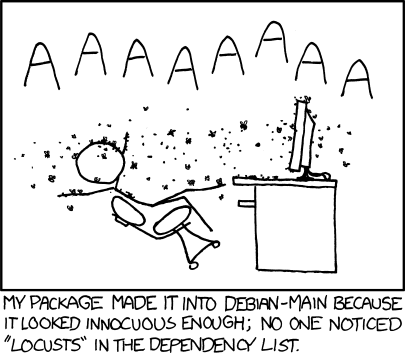While the U.S. government tries to determine whether what WikiLeaks and front-man Julian Assange have done qualifies as espionage, media theorists and critics alike continue to debate whether releasing those classified diplomatic cables qualifies as journalism. It’s more than just an academic question — if it is journalism in some sense, then Assange and WikiLeaks should be protected by the First Amendment and freedom of the press. The fact that no one can seem to agree on this question emphasizes just how deeply the media and journalism have been disrupted, to the point where we aren’t even sure what they are any more.
The debate flared up again on the Thursday just before Christmas, with a back-and-forth Twitter discussion involving a number of media critics and journalists, including MIT Technology Review editor and author Jason Pontin, New York University professor Jay Rosen, PhD student Aaron Bady, freelance writer and author Tim Carmody and several other occasional contributors. Pontin seems to have started the debate by saying — in a comment about a piece Bruce Sterling wrote on WikiLeaks and Assange — that the WikiLeaks founder was clearly a hacker, and therefore not a journalist.
Pontin’s point, which he elaborated on in subsequent tweets, seemed to be that because Assange’s primary intent is to destabilize a secretive state or government apparatus through technological means, then what he is doing isn’t journalism. Not everyone was buying this, however. Aaron Bady — who wrote a well-regarded post on Assange and WikiLeaks’ motives — asked why he couldn’t be a hacker and a journalist at the same time, and argued that perhaps society needs to have laws that protect the act of journalism, regardless of who practices it or what they call themselves.
Rosen, meanwhile, was adamant that WikiLeaks is a journalistic entity, period, and journalism prof and author Jeff Jarvis also echoed this point. Tim Carmody argued that the principle of freedom of the press enshrined in the First Amendment was designed to protect individuals who published pamphlets and handed them out in the street just as much as it was to protect large media entities, and Aaron Bady made a point that I have tried to make as well, which is that it’s difficult to criminalize what WikiLeaks has done without also making a criminal out of the New York Times.
This debate has been going on since before the diplomatic cables were released, ever since Julian Assange first made headlines with leaked video footage of American soliders firing on unarmed civilians in Iraq. At the time, Rosen — who runs an experimental journalism lab at NYU — called WikiLeaks “the first stateless news organization,” and described where he saw it fitting into a new ecosystem of news. Not everyone agreed, however: critics of this idea said that journalism had to have some civic function and/or had to involve journalists analyzing and sorting through the information.
Like Rosen and others, I’ve tried to argue that in the current era, media — a broad term that includes what we think of as journalism — has been dis-aggregated or atomized; in other words, split into its component parts, parts that include what WikiLeaks does. In some cases, these may be things that we didn’t even realize were separate parts of the process to begin with, because they have always been joined together. And in some cases they merge different parts that were previously separate, such as the distinction between a source and a publisher. WikiLeaks, for example, can be seen as both.
And while it is clearly not run by journalists — and to a great extent relies on journalists at the New York Times, The Guardian and other news outlets to do the heavy lifting in terms of analysis of the documents it holds and distributes — I think an argument can be made that WikiLeaks is at least an instrument of journalism. In other words, it is a part of the larger ecosystem of news media that has been developing with the advent of blogs, wikis, Twitter and all the other publishing tools we have now, which Twitter founder Ev Williams I think correctly argued are important ways of getting us closer to the truth.
Among those taking part in the Twitter debate on Thursday was Chris Anderson, a professor of media culture in New York who also writes for the Nieman Journalism Lab, and someone who has tried to clarify what journalism as an ecosystem really means and how we can distinguish between the different parts of this new process. In one post at the Nieman Lab blog, for example, he plotted the new pieces of this ecosystem on a graph with two axes: one going from “institutionalized” to “de-institutionalized” and the other going from “pure commentary” to “fact-gathering.” While WikiLeaks doesn’t appear on Anderson’s graph, it is clearly part of that process.
Regardless of what we think about Julian Assange or WikiLeaks — or any of the other WikiLeaks-style organizations that seem to be emerging — this is the new reality of media. It may be confusing, but we had better start getting used to it.
Related GigaOM Pro content (sub req’d):
- Why Google Should Fear the Social Web
- Lessons From Twitter: How to Play Nice With Ecosystem Partners
- What We Can Learn From the Guardian’s Open Platform
Post and thumbnail photo courtesy of Flickr users New Media Days and Yan Arief





 "
"


















 "
"










